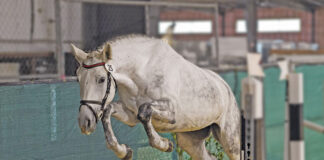If you’ve owned or been around horses long enough, you’ll no doubt have witnessed the gamut of trailer-loading abilities. From the highly desired self-loader to the horse who simply refuses to get on to everything in between, loading onto a trailer is an essential skill that, when missing, can lead to serious frustration on the part of both horse and human.
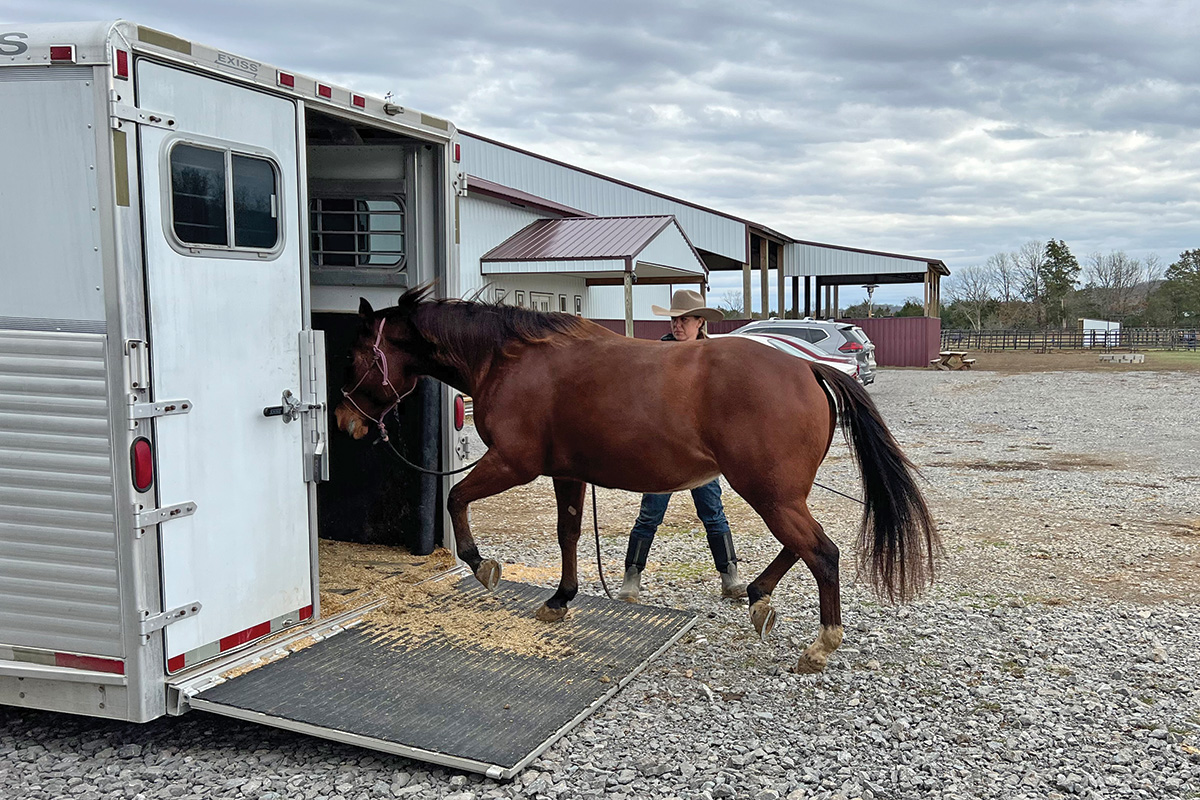
If you’ve ever had the misfortune of trying to load a difficult horse, you may have wondered just how or why he arrived there. According to Malinoski, horses can find loading onto a trailer challenging for a variety of reasons, including inexperience, an accident involving trailering, poor experiences while hauling as a result of driver error, and even uncomfortable trailering experiences derived from slippery flooring.
Regardless of the reason, Malinoski shares some of her tried and true methods for teaching your horse to overcome his aversion and load like a pro.
Preparing Your Trailer for Self-Loading
Before you begin working through your horse’s trailer loading woes with self-loading as the end goal, make sure that your trailer is safe, comfortable, and inviting by bedding the floor with shavings and placing hay in a bag or net. For the trailer floor, Malinoski prefers trailer mats with shavings and, because it is highly palatable, chooses to offer alfalfa hay.
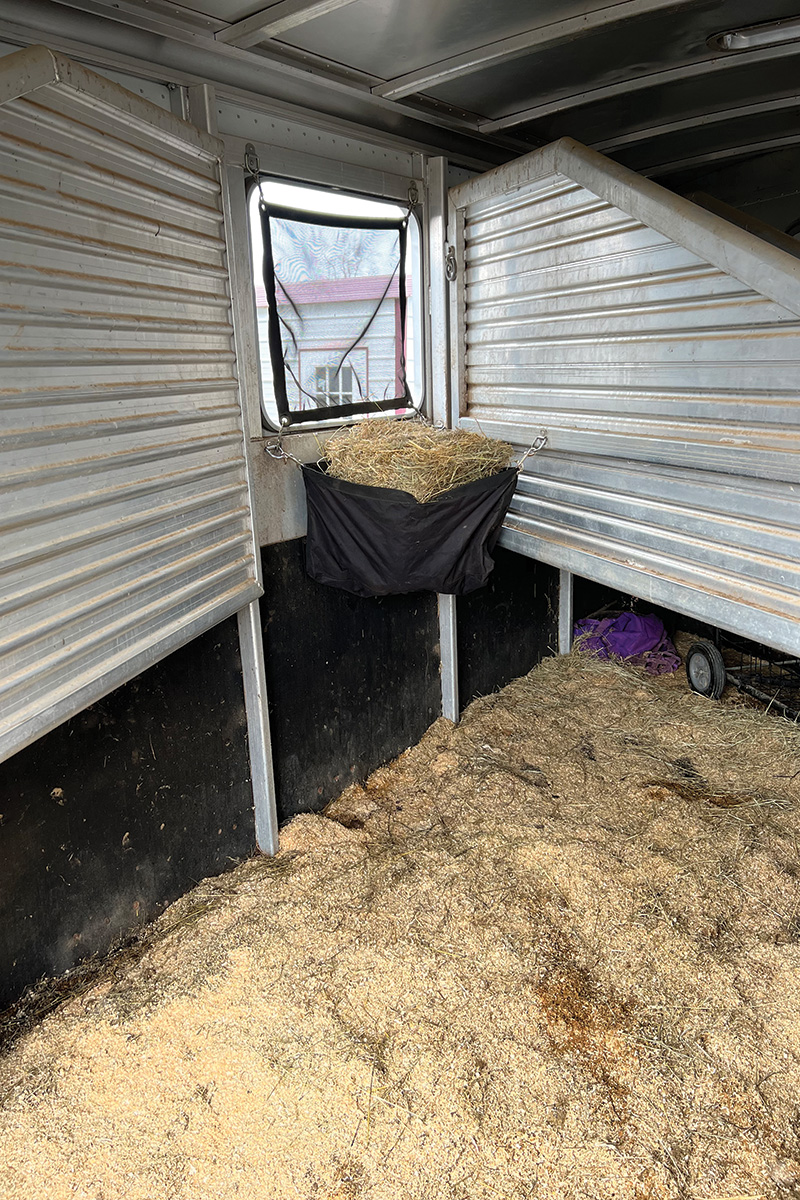
Trailer preparations aside, Malinoski explains that your horse should have good manners and be solid in his ground handling skills so he can go off the feel of what you’re asking before you attempt to tackle the trailer itself.
Finally, if possible, you may wish to provide your horse with a mentor or buddy skilled at trailer loading. While Malinoski advises that horses should eventually become adept at loading alone in any situation, having an experienced horse to model his loading skills and then waiting patiently in the trailer may make your horse comfortable enough to be drawn inside to join him while he is still solidifying the skill.
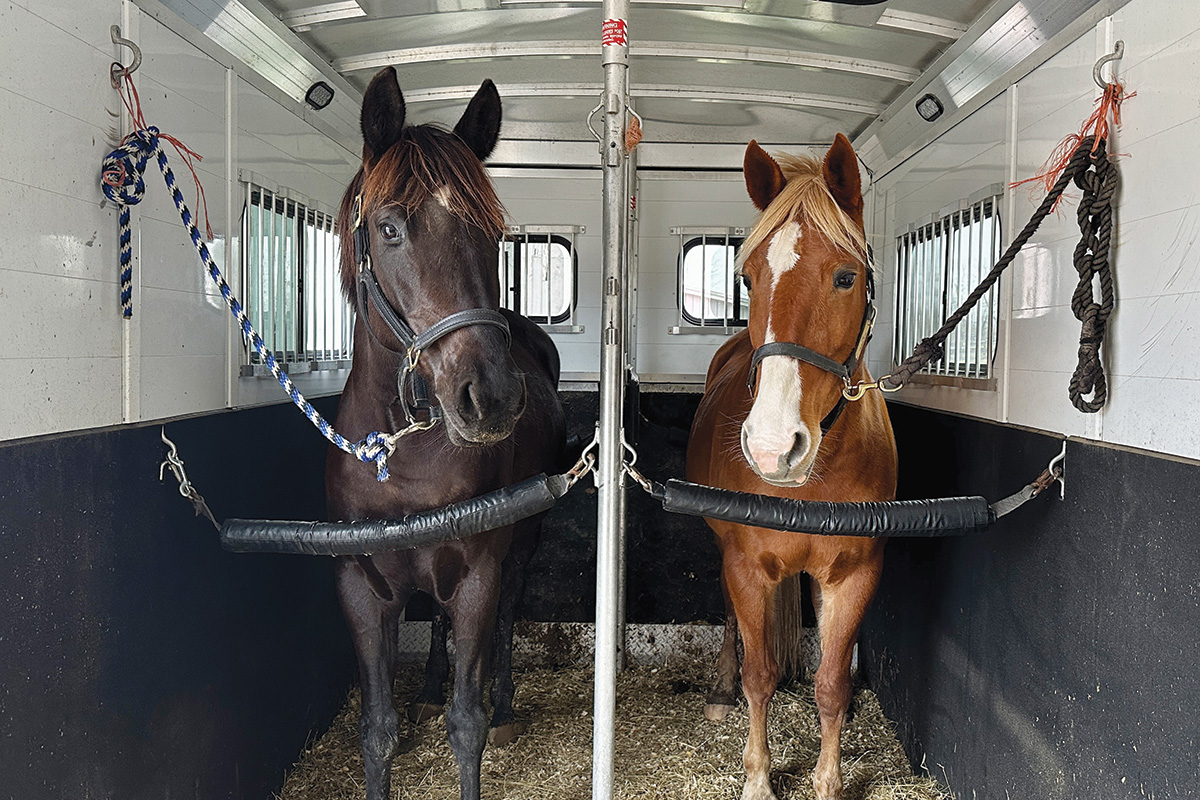
Squeeze Game
To help horses become comfortable in narrow spaces such as trailers, Malinoski makes use of an activity called the squeeze game. Using an arena fence or wall, set up two cones or barrels slightly larger than one horse width to create a narrow passage, similar to a trailer stall.
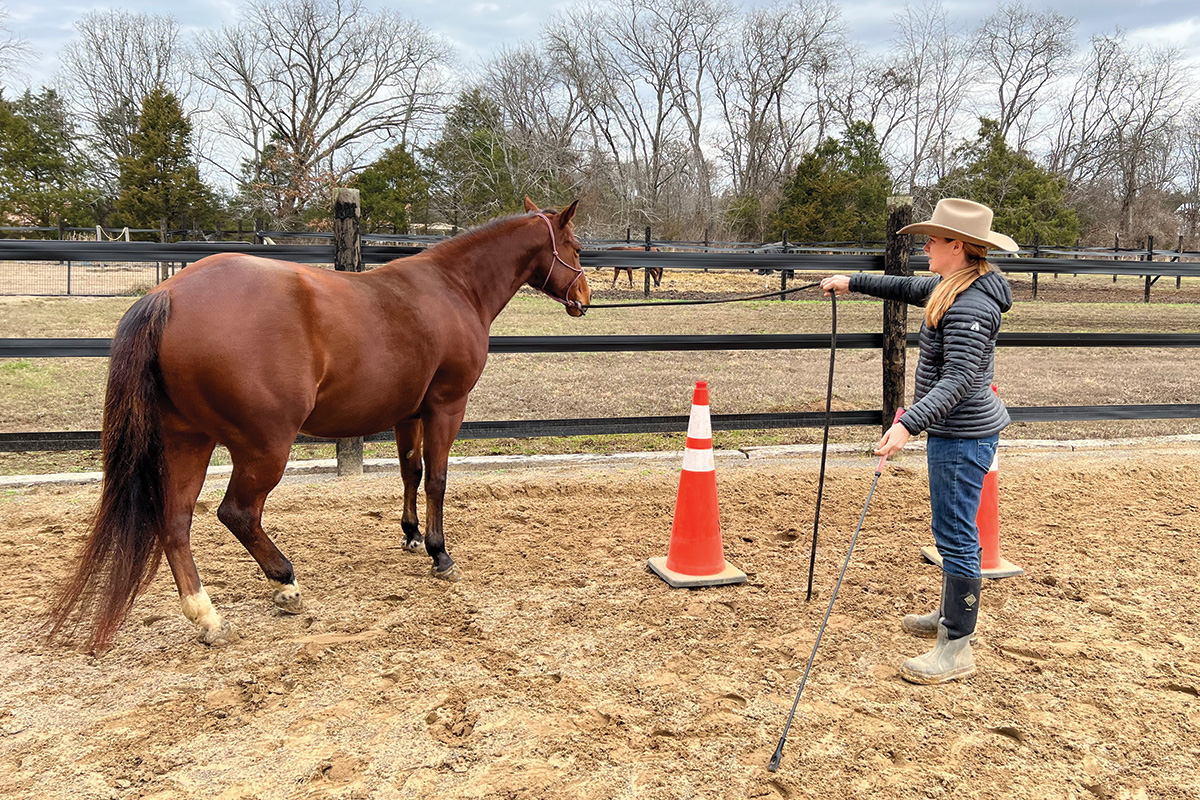
Before beginning, your horse should be outfitted in a rope halter with a lead rope attached. You’ll also need a whip or stick with a flag or string at one end.
Comparable to a longeing exercise, work your horse at the walk on a circle, sending him through the passage on one side of your circle. Be sure to work in both directions.
Malinoski says that while this exercise teaches young horses to be more accepting of tight spaces and lays the groundwork for future trailer loading success, it can also work well for older horses that have developed trailer loading problems.
Getting Your Horse to Successfully Self-Load
Once your horse is doing well with the squeeze game, it’s time to get back to loading. To prepare, you should outfit yourself and your horse just as you did for the squeeze game.
Malinoski begins by working the horse behind the trailer with the doors closed. You can do this by spending a few minutes reinforcing your send-off command at the walk on a small circle in both directions.
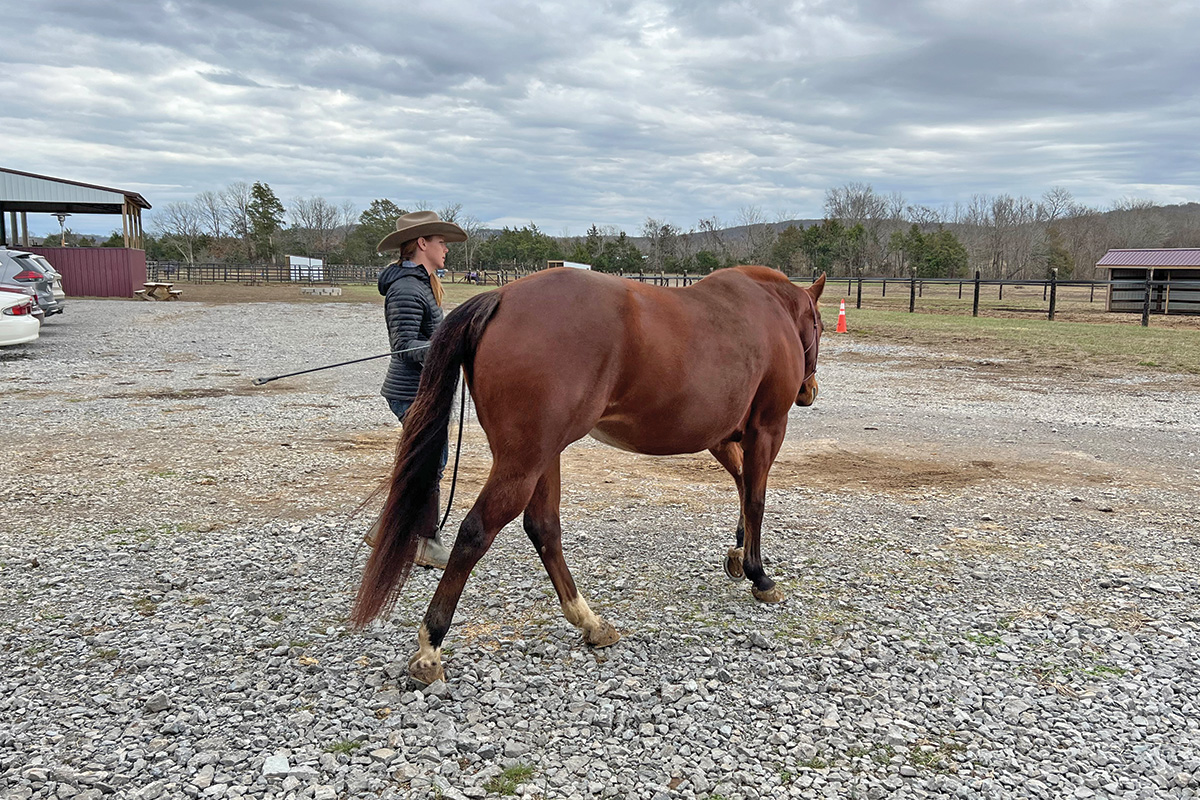
Next, open the trailer doors. Using the same commands, send your horse onto the trailer. Have patience and be prepared to drop back and reinforce his skills before trying again.
If the behavior isn’t too deeply confirmed, the session may advance quickly, but in more deeply ingrained instances, it may take a few sessions before your horse is well on his way to being the self-loader you’ve always dreamed of.
Getting Professional Help
Sometimes even the best-laid plans can go awry, and your trailer re-training may not go the way you expected.
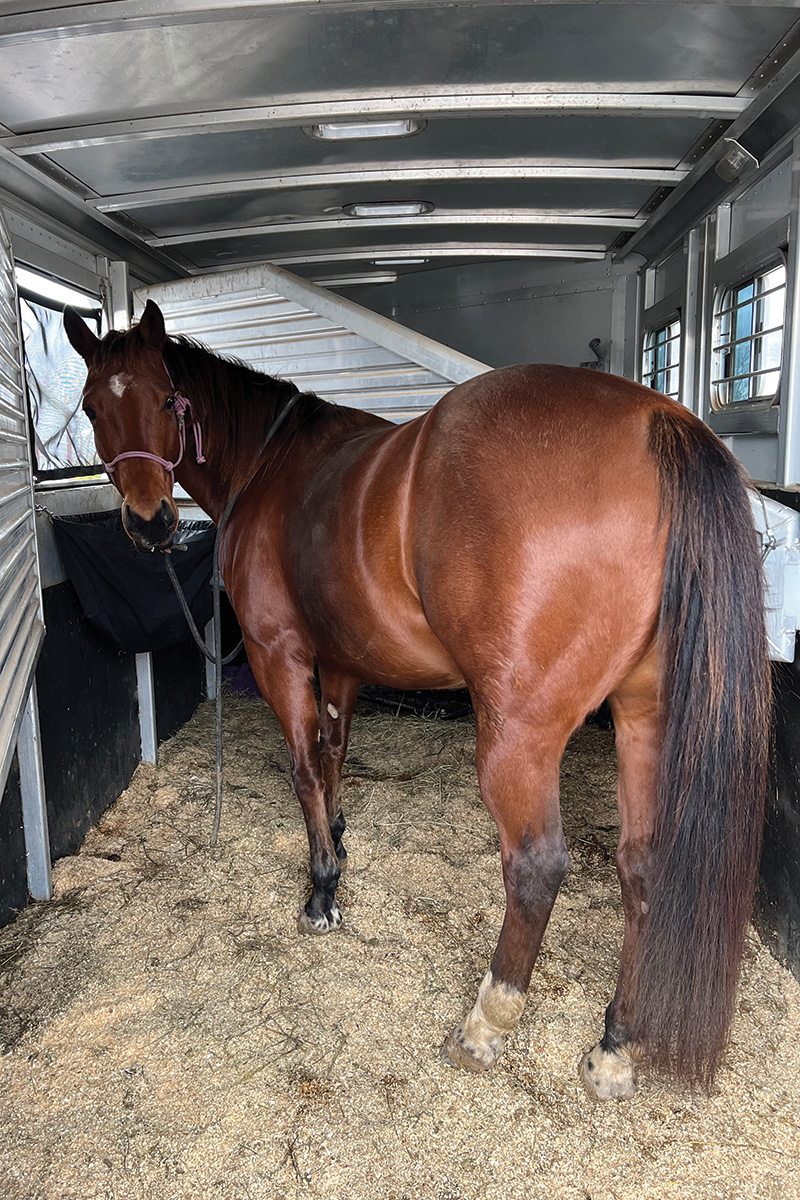
While Malinoski says that most amateurs who are solid in their ground handling skills should be able to tackle this issue, she recommends seeking professional help if your horse isn’t making progress, or if he’s regressing from his previous level of expertise.
“In these cases, you should focus on your groundwork away from the trailer and find a professional to help you in the trailering situation,” she advises.
This article about teaching a horse to self-load in the trailer appeared in the May 2023 issue of Horse Illustrated magazine. Click here to subscribe!




